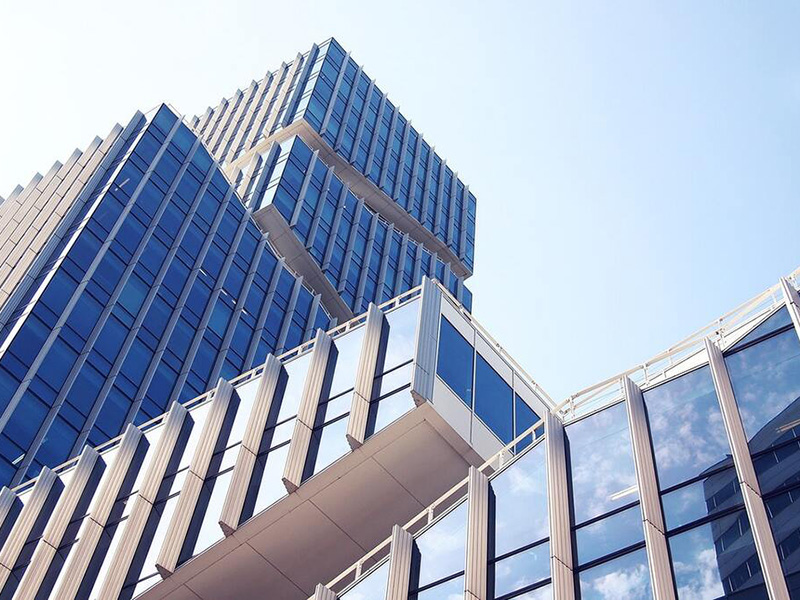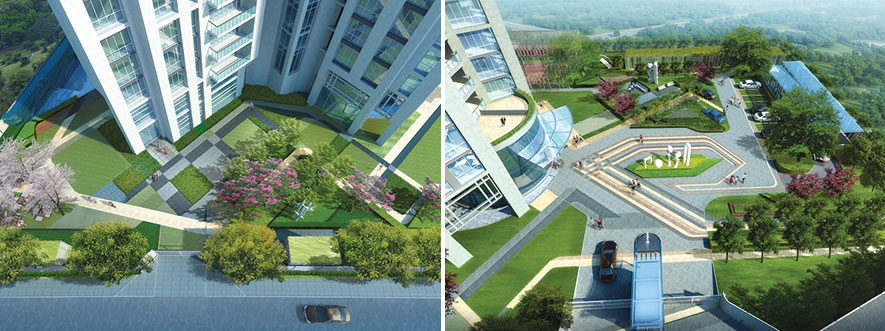
Latest construction techniques that reduce labour, time and cost, along with use of eco-friendly materials, are making buildings more sustainable; they also enhance their value in terms of quality and cost. Real estate developers, builders, architects, and material manufacturers who are proactively contributing to a sustainable environment, share their views with MGS Architecture
Building materials add a significant cost to the overall budget of a building. Many manufacturers are developing more cost-effective solutions ranging from new to improved materials that come with new features, innovative combinations and additives, multifunctional characteristics, and greater efficiencies. For architects and interior designers, the challenge lies in creating an attractive spatial and structurally sound building, using functionally advanced or traditional/local materials that have been improved upon or recycled from construction sites.
According to a report on the Building Interior Sectors in India, authored by Gherzi Consulting Engineers Pvt. Ltd. in co-operation with Swiss Business Hub India, India is seen as the third largest emerging economy as well as the third largest construction market in the world by 2025. The large market for building interior sectors in India comprising major product groups such as sanitaryware, bathroom fittings, LED lighting and switches, access control systems, doors and windows and modular kitchens, is growing at 15-20%. About 10% of the market comprises the premium segment. The growth in use of green building interior products is also led by IGBC whose vision is to enable a sustainable built environment for all, and facilitate India to become one of the global leaders in sustainable built environment by 2025; the concept is routed through LEED-INDIA Green Building Rating System.
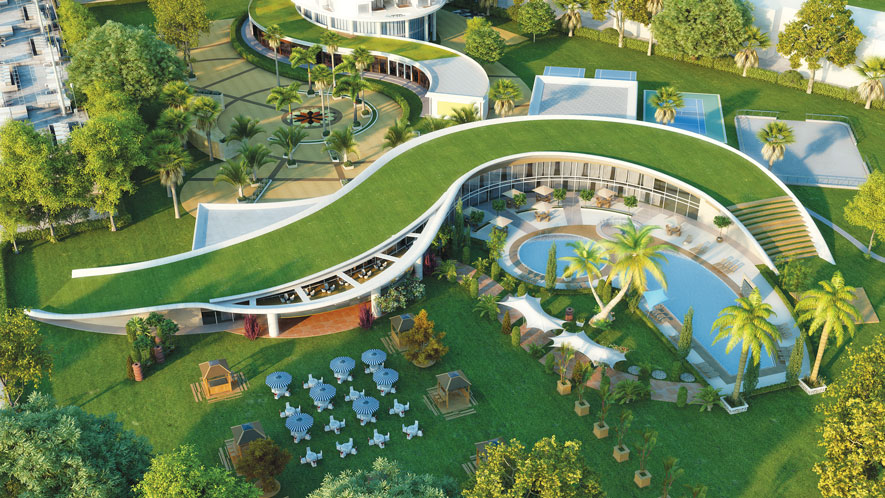
SARE club, Gurgoan
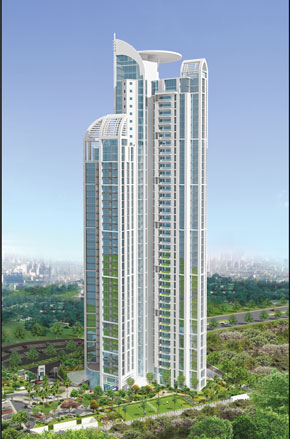
Mantri Developers
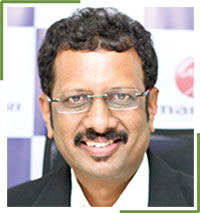
Mantri Developers is using Mivan Shuttering, a new-age material that eliminates use of materials like natural wood and plywood. Mivan Shuttering is seismic resistant, has lesser number of joints and increased durability. The use of Mivan ensures a uniform quality of construction and allows faster completion with reduced manpower. Mantri is also using reconstituted marble for flooring and cladding as it alleviates a uniform finish while helping in controlling costs and quality.
It has also adopted the Tunnel Formwork from Turkey in a major way. This system allows construction of cellular walls and slabs in one operation on a daily cycle. It combines the, quality and accuracy of offsite production with the flexibility and economy of construction, and is recognized as a modern method. It enhances quality of finish and life, while keeping the cost of labour low by increasing the production levels. This technique is also proven to provide superior earthquake resistance. "I am proud to say that Mantri Developers is the first to bring in this technology for large scale purposes, and I am sure this will revolutionize construction in India. The amazing thing about Tunnel Form Work is that one floor can be cast in just one day. It means that for a building having 30 floors, the structure can be completed in 30 days flat!" Comments Adamsab.
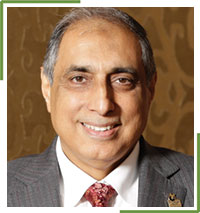
Prestige is also using the Diaphragm Wall Technology in some of its projects that are located in city centres where deep excavations are required. Here, the safety of existing structures in the vicinity has to be kept in mind. Diaphragm walls are constructed to help ease the excavation and construction. The company is also using Aluminium Shuttering Systems and Concrete Wall Technology in a number of their large residential developments since these systems enable a faster method of construction.
"Although we need to take a more comprehensive approach for implementing these systems and at the planning stage itself, we more than make up for this as there is a faster casting cycle time as the walls and slabs are cast at the same time. This brings about a significant reduction in the required labour and the man hours needed to complete a job. Moreover, since implementing the systems requires better planning and accuracy on site, the end quality of the construction is much better," explains Razack.

He adds, "Keeping in mind the current scenario, we are unable to incorporate technology or material to build 100% green buildings as presently buyers are not ready. There is a 'want' for green buildings but the market is price sensitive as well. Developing a green building would mean costs would be pushed up by another 20%; hence, a 100% green building would mean increased cost. However, we are using strategies like waste water harvesting and rain water harvesting techniques to conserve and preserve water, and eco-friendly paints in our upcoming projects. We have also put in a lot of improvements into our architectural planning and designs, which has helped us bring more natural light and air into the buildings, thereby, cutting cost of energy and electricity."
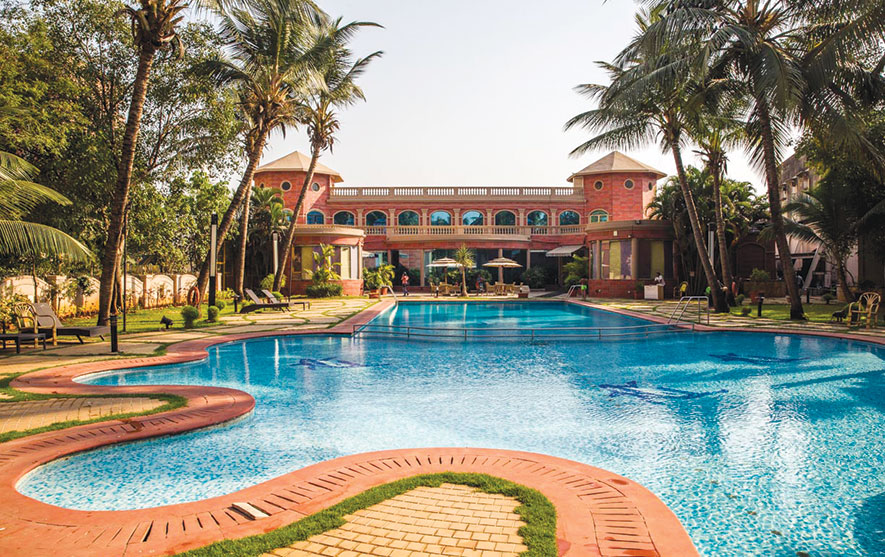
Club Bloomingdale, Nahar Group

Good Earth has been building sustainable communities in Bangalore, Cochin and Calicut for the past 28 years; it was awarded the best 'Architecture Award 2015' for Group Housing by NDTV Design and Architecture 2015. Its upcoming eco-village called Good Earth Malhar in Kengeri, Bangalore, is again an example of community living, and has been designed to manage natural resources and conserve energy. The rainwater from the roofs is collected and used to augment other sources of water. The landscape and master plan responds to the natural water channels; storm water is percolated and collected wherever possible. Sewage water is treated and recycled for flushing and irrigation. The main building material is mud, which has been obtained from the site itself. Biodiversity in the landscape and growing of culinary species are important aspects of the project. Courtyards of various scales ensure shading and reduce the heat–island effect. The entire Floor Space Index has not been used; instead, it has a low density of 400 families in 40 acres with 60% open space for intense planting and softscaping.

"The world as we know it, has limited resources. It is our responsibility to ensure that these scarce resources are used in a prudent manner. One of the basic ways in which we can make a difference to society is by investing in a planet-friendly home or green home that takes into account each and every aspect of design and construction and has the power to create environments that are responsive to climate, location, and human needs. Scientific understanding of structural requirements, properties of materials, efficient engineering, and construction, are some of the important foundations on which green homes are ideated and built," adds Iype.
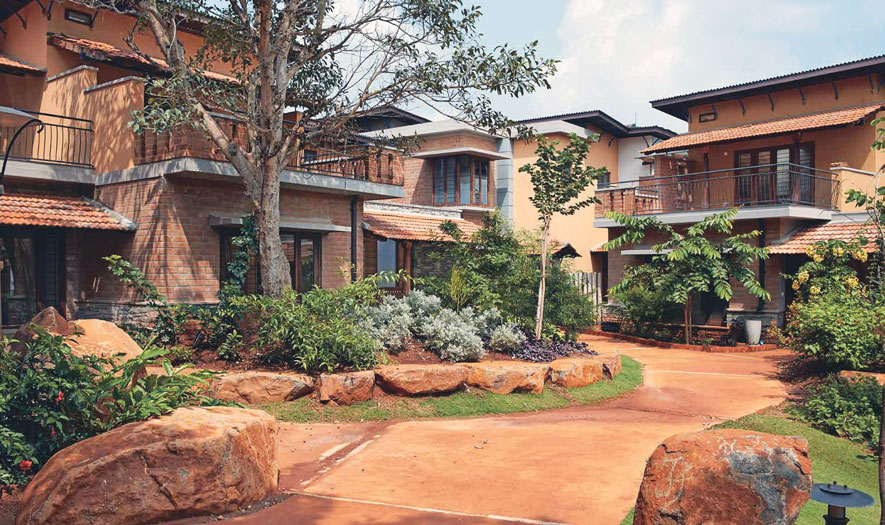
Good Earth Malhar Patterns
In 2015, Assotech Realty Pvt. Ltd., a premier developer of Delhi NCR had announced that in view of the extremely poor quality of air in the NCR region, it would launch a separate tower in Assotech Business Cresterra (ABC) with a multi-layered indoor air purification system installed in each office unit, for which Assotech Realty would tie up with a company that has the most advanced air purification technology. ABC, an integrated business park, is a Green Leed Certified project located at sector 135, Noida Expressway.
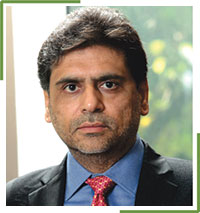
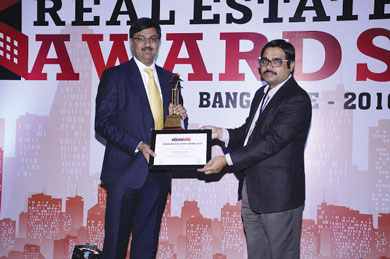
Habitat Ventures awards
According to Dodge Data & Analytics World Green Building Trends 2016 (SmartMarket Report in which USGBC is a contributing partner), by 2018, the green building industry in India will grow by 20%, driven largely by environmental regulations and demand for healthier neighbourhoods. New high-rise residential, communities and mixed-use development are expected to be the top three sectors for green building growth in India. The research conducted in nearly 70 countries, also demonstrates that global green building continues to double every three years. Increase in consumer demand has pushed the world's green building market to a trillion dollar industry, a surge that has led to a corresponding increase in the scope and size of the green building material market, which is expected to reach USD 234 billion by 2019.
Green building programs such as LEED have been significant drivers of market transformation across the globe. Today, there are nearly 75,000 commercial projects participating in LEED across the globe, with 1.85 million sq.ft. of building space, which LEED is certifying every day. In India, there are more than 1,990 projects, comprising more than 822 million sq.ft. of space, participating in LEED. The report found that green buildings offer significant operational cost savings compared with conventional buildings. To this effect, respondents expect 14% savings in operational costs over five year savings for new green buildings, and 13 % savings in operational costs over five years for green retrofit and renovation projects. Building owners also report that green buildings - whether new or renovated - command a 7% increase in asset value over conventional buildings.
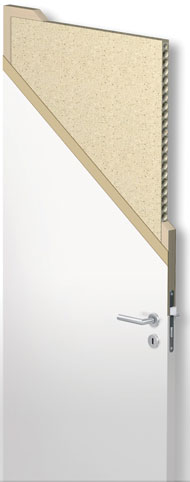
Tubular Door construction - Sleek
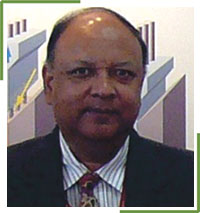
More than 50 leading door manufacturers in India are already using these eco-friendly boards, and contributing towards reducing global warming. Sleek Boards is PEFC certified, which means that our products can be used in all green building projects. We are constantly educating architects and builders not to be obsessed with timber-filled doors. Hopefully, our efforts will create awareness," he adds.
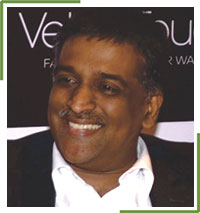
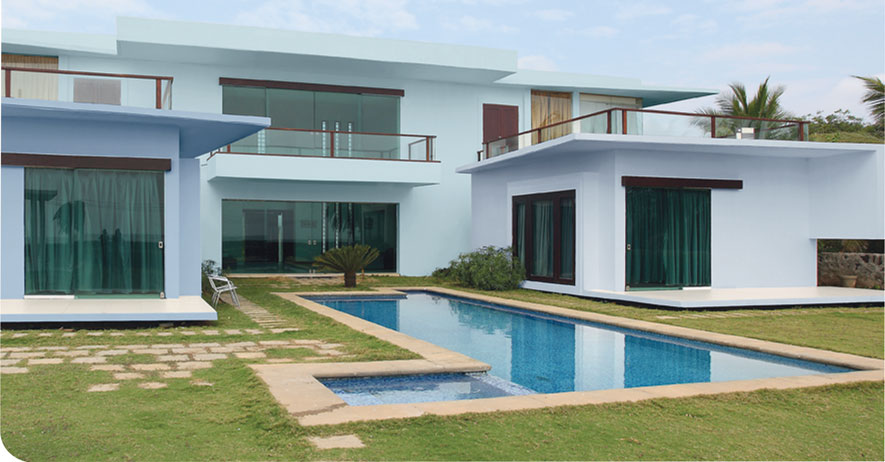
Dulux Weathershield Obelisk
Voluntary green building certifications such as LEED and GRIHA help to increase the acceptance, use and development of new technologies designed to assist in meeting new green standards. We also continue to accelerate our development of eco-premium products. Recent examples include a range of solvent-free concrete flooring paints; highly efficient and fully biodegradable micronutrients for agro applications; and UV clear coats that help vehicle body shops to reduce their energy costs. The rapid urbanisation that we see today presents huge challenges. The responsibility for making cities and human settlements sustainable lies with policymakers, businesses and society itself," he adds.
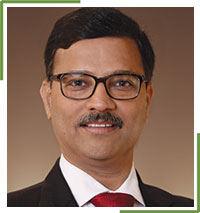

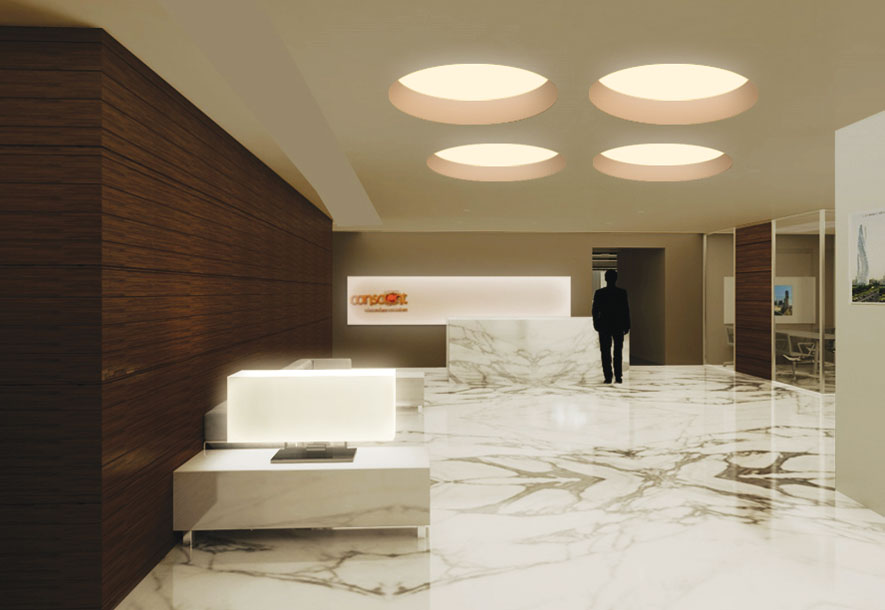
Warm Reception Space, Conscient Infrastructure Corporate Office, Gurgaon
"In institutions and offices, for instance, operating costs are significantly reduced, and they also assure an intelligent design, flexibility in lighting control, healthy interior climate, positive impact on the occupants' well-being, among other things.The ONGC headquarters at Delhi designed by Architect Hafeez Contractor, intended to attain the highest LEED platinum rating, seeks to achieve 0.435W/sq.ft./100lux at the workstation area. The last qualifier of 100 lux is indicative of the balance between energy efficiency and illuminance achieved at the task area. Green buildings are not dark spaces with lower levels of lighting to achieve the mandated energy requirements. In fact, the inclusion of a lighting designer or the assurance of a 'designed lighting' scheme in environmentally certified buildings ensures that both criteria are met and balanced," adds Issar
In April this year, PNB Housing Finance Ltd announced that it had raised Rs.500 crore from IFC for funding Green Residential projects, thus becoming the first housing finance company (HFC) to issue Green Bonds successfully. The funds will be used to finance green residential projects which are certified by recognised green building certification standards, including EDGE (certification programme developed by IFC).
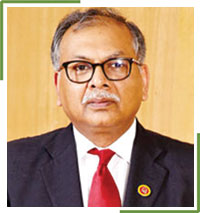
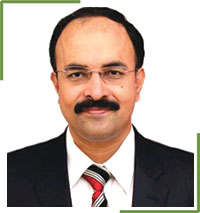
In his view, developers have understood that green certification can attract more customers and investors, and are aligning themselves with green concepts. However, the supply gap is still quite significant, and there is still a need for more awareness among end-users. Bank loans are an integral factor driving the residential market, and unless bankers and lending agencies are trained on the benefits and importance of green real estate and insist on such features, we will not see awareness and traction of sustainable properties increase much. In commercial properties, there needs to be more clarity on who reaps the benefits - the owner or the tenant. In view of this, the Energy Conservation Building Code has to be simplified, and the state governments have to ensure that it is made mandatory by all concerned local urban bodies that presently do not have the wherewithal for implementation.
Currently, Indian cities that offer incentives and concessions for green building development and use include Kolkata, Noida, Hyderabad and Pune. Incentives include higher FAR and property tax incentives by Greater Hyderabad Municipal Corporation, the Pune Eco-housing program, etc. Linking property tax to actual performance and mandating a simplified region-specific list will help attain green goals faster and in more cities. The positive impacts will accrue faster when green construction parameters are made mandatory and implemented by all stakeholders like urban local bodies (municipalities and development authorities), builders, owners, tenants, electricity distribution companies, pollution control bodies, water supply and sewerage departments, and state and central governments.
"The onus of reducing environmental degradation does not fall solely on the real estate. However, designing green buildings is an obvious solution and within every developer's reach. The government is severely challenged in making basic resources like water and electricity available and managing waste. The situation will not improve without proactive intervention, rather, it will only worsen. Sustainable real estate can make a significant dent in this resource deficit if it is deployed in the required magnitude, so we as a country need to 'go green' sooner rather than later," he adds.










